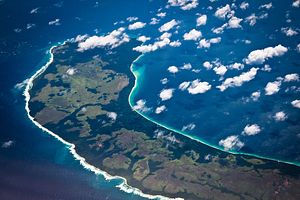The Indian Ocean has become an important aspect in China’s foreign policy, as it links Chinese sea lines of communications (SLOCs) to African and Middle Eastern energy as well as European trade routes. The Indian Ocean region (IOR) contains China’s most important SLOCs: as much as 75 percent of China’s oil imports (more than 6 million barrels daily) come from the Middle East and Africa. This maritime presence is supplemented by Chinese investments in port facilities that ring the IOR. Chinese scholars view the Indian Ocean as an area of potential rivalry between India and China, according to naval scholar Toshi Yoshihara.
With increasing Chinese activity in the IOR, India is awakening to the possibility of deep Chinese engagement in the Indian Ocean. If India is to strengthen its presence in the Indian Ocean, it must take advantage of its geography, specifically the Andaman and Nicobar Islands. Located in the Eastern Indian Ocean, this group of 244 islands spans 450 nautical miles and sits strategically at the entrance of the Strait of Malacca, one of the world’s busiest shipping lanes. According to Yoshihara, the location of these islands allows for India to play into China’s psyche by creating an Indian version of the Western Pacific’s first-island chain.
From these islands, India could employ anti-access and area-denial (A2/AD) weapons to create a maritime exclusion zone in the event of a conflict with China. The presence of People’s Liberation Army Navy (PLAN) surface combatants, aircraft carrier, or nuclear attack submarines could be countered by developing the Andaman and Nicobar Islands. To do that, India must fortify its local military facilities. Bolstering its defense infrastructure on the islands would send a strong message that India intends to remain the leading power in the Indian Ocean.
The existing Indian military facilities on the islands have been developed for constabulary type missions – such as costal patrol and limited search and rescue – and are inadequate for supporting A2/AD, anti-submarine warfare (ASW), or intelligence, surveillance, reconnaissance (ISR) infrastructure and operations. With only a small runway and limited port facilities on the islands, India cannot support larger ISR or ASW forces such as its newly purchased P-8s, submarines, or modern surface combatants, which would be suitable for monitoring or interdicting Chinese maritime activity.
The ability to monitor Chinese maritime activity in the IOR would allow India to acquire valuable information about the nature of Chinese operations in the IOR, such as operational patterns. More specifically, the facilities would provide a base from which to deploy A2/AD capabilities to constrain access to the IOR. While forward positioning specific weapon systems is significant, the construction of the facilities and support structure is also crucial. Such facilities would send an emphatic message to China that India is serious about asserting its maritime role in the IOR and deterring aggression.
The growing influence of China in the IOR is already causing concern in India. If India fails to use its geographic advantages in the region, it will face an emboldened PLAN. The geostrategic position of the Andaman and Nicobar Islands makes them central to any Indian response to rising Chinese influence in the IOR. Strengthening capabilities in this area would force the PLAN to shift its focus from the Western Pacific to the Indian Ocean, which could tax Chinese forces and attention. China’s growing presence in the Indian Ocean is assured; but India’s role is still emerging. Fortifying the Andaman-Nicobar Islands would be the first step toward a more robust Indian Ocean strategy.
Chris Mclachlan is a recent graduate from the University of San Francisco where he majored in International Studies and Asian History. He recently spent time as a Researcher with the Freeman Chair in China Studies at the Center for Strategic and International Studies.

































